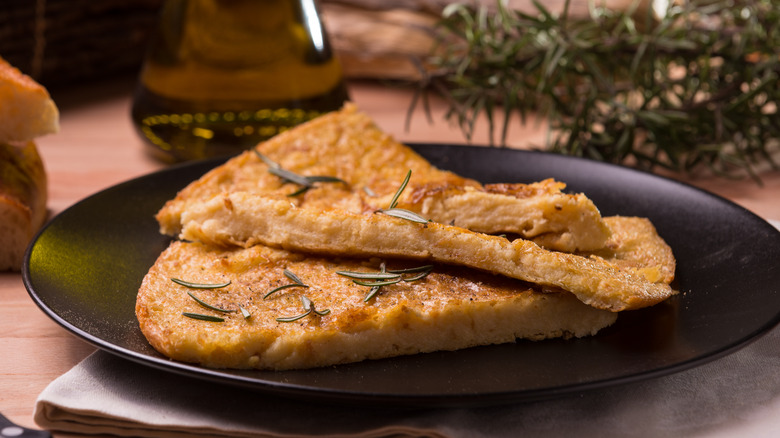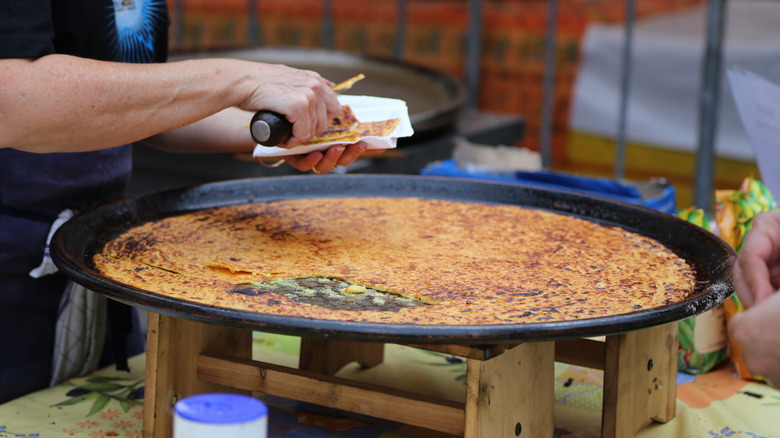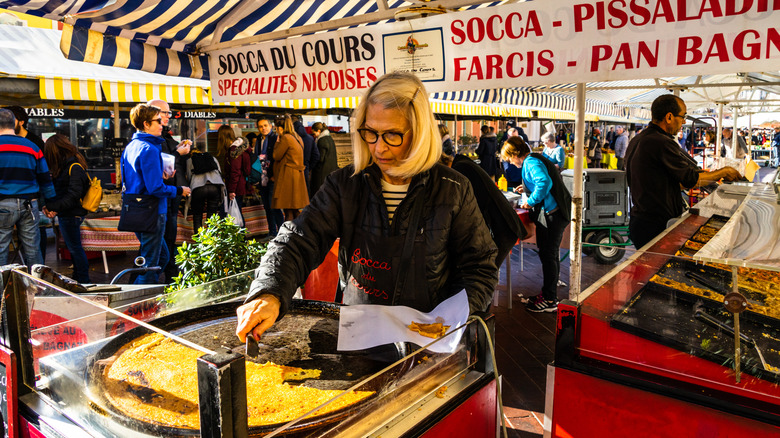Italian Farinata Is The Gluten-Free Pancake Of Your Dreams
Pancakes are one of the world's signature breakfast foods due to being both incredibly delicious and surprisingly versatile. From classic pancakes to pulled pork pancakes, they're a food you can take in all sorts of directions — just remember that first sacrificial pancake is critical for a perfect batch. But if you're gluten-free, you're out of luck when it comes to great pancakes, right?
Wrong! It turns out there's a very tasty gluten-free pancake option if you don't just grab the boxed stuff: Farinata. There's a lot more to Italian food than just pasta, and farinata is a perfect example. Farinata are extremely simple, traditionally made from only a few ingredients including chickpea flour, olive oil, and water — none of which contain gluten. They're typically best in savory preparations, which is why gluten-free chickpea rosemary farinata is the most classic form; rosemary and salt are frequently considered the default seasoning for farinata.
Cooking them is likewise extremely simple. Though the traditional cooking method is to use a copper pan, you don't need to own one to make them, as cast iron works well, too. Whichever you've got, the ingredients are mixed together in the pan, then baked for around 15 minutes.
The origin story of farantita is somewhat dubious
Farinata are native to two specific Italian regions: Liguria (to the northwest, where Genoa is located) and Tuscany (located further down the western Italian coast, and where they're referred to as cecina). The legend of farinata's origin is that it was first created during the naval Battle of Meloria between the city-states of Genoa and Pisa in the 13th century. The story goes that saltwater soaked a bunch of sacks of chickpea flour aboard a damaged ship. This mixture was accidentally cooked on the deck of the ship under the harsh sunlight, creating the first farinata.
Like the majority of food legends — especially those which contain the old classic claim "this food was created by accident" — this explanation should be taken with more than one grain of salt, as there's no hard evidence to support it. Whether it's true or not, though, farinata are now typically accompanied by either antipasto meats (also known as salumi) or vegetables and found in restaurants across Liguria and Tuscany to this day. It is also served as street food.
Nearby regions have their own versions of farinata
There are other versions of chickpea flour pancakes from around the Mediterranean that operate on similar principles to farinata, but have their own unique spin. The French version, called socca, is found all through southeastern France — unsurprising, since that's the region that borders Italy — but particularly around the city of Nice. It's mostly similar to farinata, except it also makes use of cumin, and is typically eaten as a street food.
There's also a North African version, though its name changes depending on where you are. Called kalinti, karane, or karantita in Morocco, and garantita in Algeria, the dish starts with chickpea flour, but diverges significantly with farinata from there. It's typically combined with eggs (and possibly milk and baking powder), which winds up giving it a consistency more like a flan or quiche. The end result is a dish some would describe as being more like a thin pie than a pancake.


